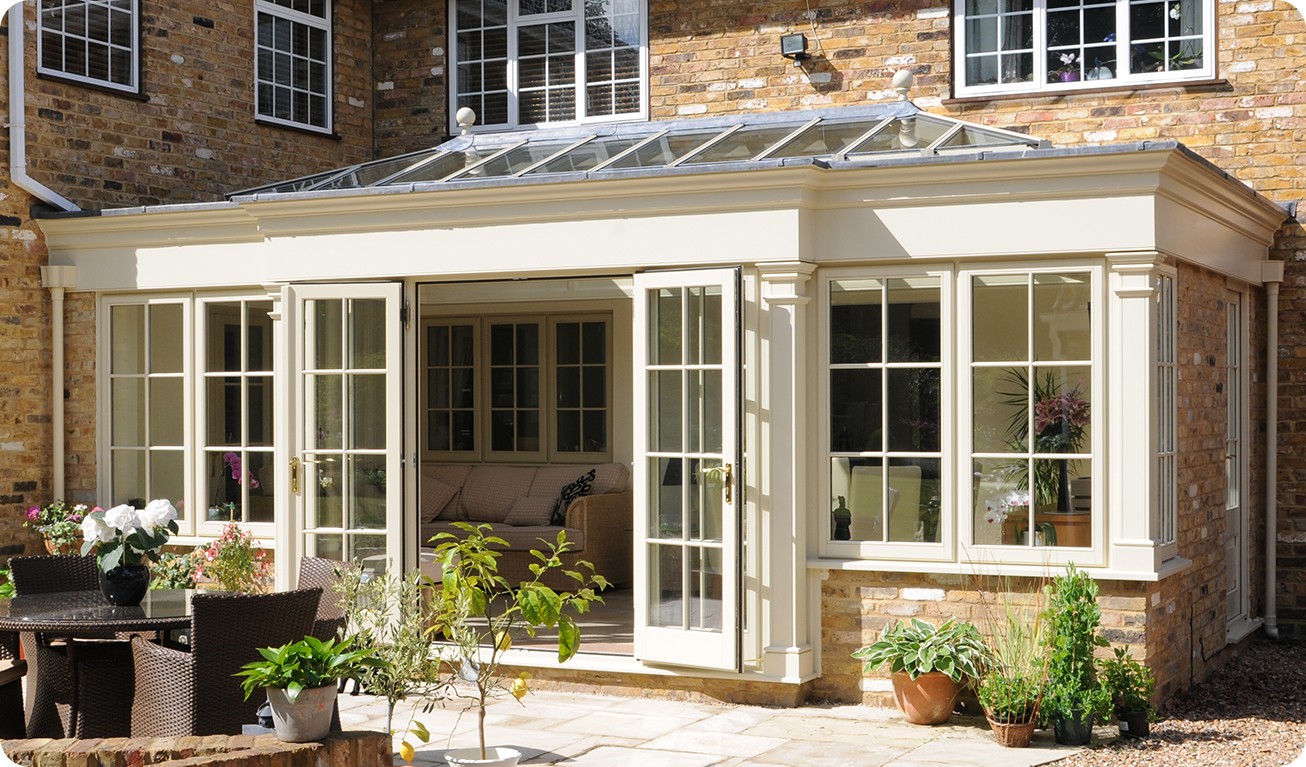When it comes to your conservatory roof, you want to keep it in tip-top condition. But if leaks and condensation become frequent problems, you might need to consider replacement.
But what is the best option? This article will look at several different types of roof to help you decide.
Tiled Roofs
Like other solid conservatory roofs, tiled roofs consist of a layer of solid insulating board fastened to the frame and rafters. It is then covered by a lightweight tile. These can be a variety of materials including natural slate, clay tiles, or zinc coated steel formed into a number of styles. They are available in a range of colours and finishes to complement your property.
A tiled roof will improve the u-value of your conservatory – meaning heat transfers through it much more slowly and is more insulated than polycarbonate or glass. This will help to keep your conservatory a comfortable temperature all year round and can significantly reduce heating bills.
In addition to this, a new warm conservatory can transform the way you use your home. It can become a multi-purpose living space, kitchen/diner or office. Plus, the acoustics will be vastly improved. It’s also worth noting that a replacement conservatory roof will allow you to install lighting inside the ceiling creating a beautiful interior.
Polycarbonate Roofs
Unlike glass, polycarbonate roofing is a translucent plastic that can help to bring natural light into your conservatory. It’s commonly used for greenhouse roofs, due to it standing up to wicked weather, and provides plenty of UV protection too.
However, the downside to using polycarbonate as a conservatory roof is that it has little to no thermal efficiency. This means that it’ll be incredibly hot in the summer and expensive to keep warm during the winter.
This is why it’s important to add extra insulating panels to your conservatory, like our high-performance Multiwall polycarbonate glazing. It features co-extruded longlife UV protection and offers a variety of solar control tints, helping to balance the room temperature and reduce the drumming noise caused by rain. It’s also incredibly affordable and lightweight, making it a popular choice for homeowners. It does however have a shorter lifespan than a glass conservatory roof. However, this is often offset by the reduced energy bills.
Concrete Roofs
Adding a solid roof to your conservatory will turn it into a room that can be used all year round. It will increase the amount of light that can enter and also improve the thermal performance of the space.
Polycarbonate was a popular option until around 2011. It’s thermoplastic which means it can be moulded into the required shape and is great at blocking out UV rays, which can cause fading of furniture and fabrics.
Roofworx Southwest uses the Leka System, which is designed to work in conjunction with traditional conservatory frames and is a BBA accredited product that meets new energy guidelines (Approved Document L). All our Leka installations are carried out by Network Leka Installers.
Roof tiles come in a wide range of colours and styles, and can be installed on any conservatory style. They are tough and independent, so they require very little maintenance and last for up to 50 years. They can be fitted with Velux-style windows for extra natural light and to help ventilate the room.
Steel Roofs
Modern, lightweight solid roofs are an excellent option if you’re looking to upgrade your polycarbonate conservatory. They’re a great way to enhance your home’s kerb appeal, add value and improve thermal efficiency.
However, it’s important to note that solid conservatory roofs will require a different structure than your existing conservatory walls and foundation. A lintel and post system will need to be added at the eaves to carry the weight of the new roof.
One of the best ways to find an installer you can trust is to ask friends and family who have already had their conservatory roof replaced. Many companies will be happy to put you in touch with their clients who can provide a ‘warts and all’ review of their installation experience. You can also find online reviews on sites such as Checkatrade. These will give you an idea of the quality of work to expect from a company. As with any large home improvement project, it’s important to seek a second opinion from someone without a vested interest.



